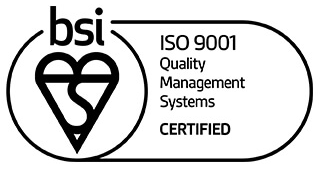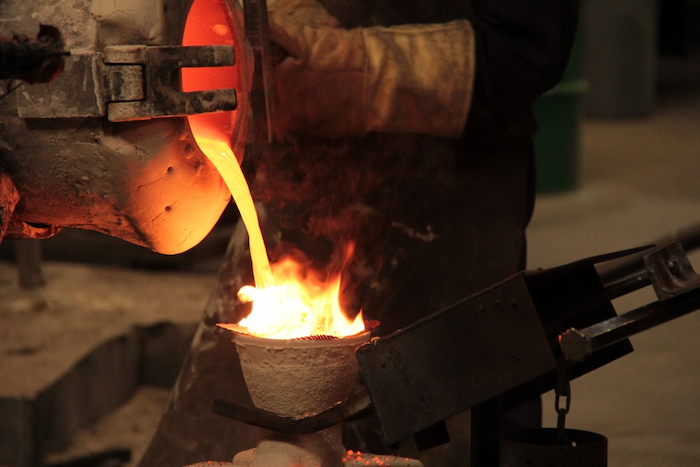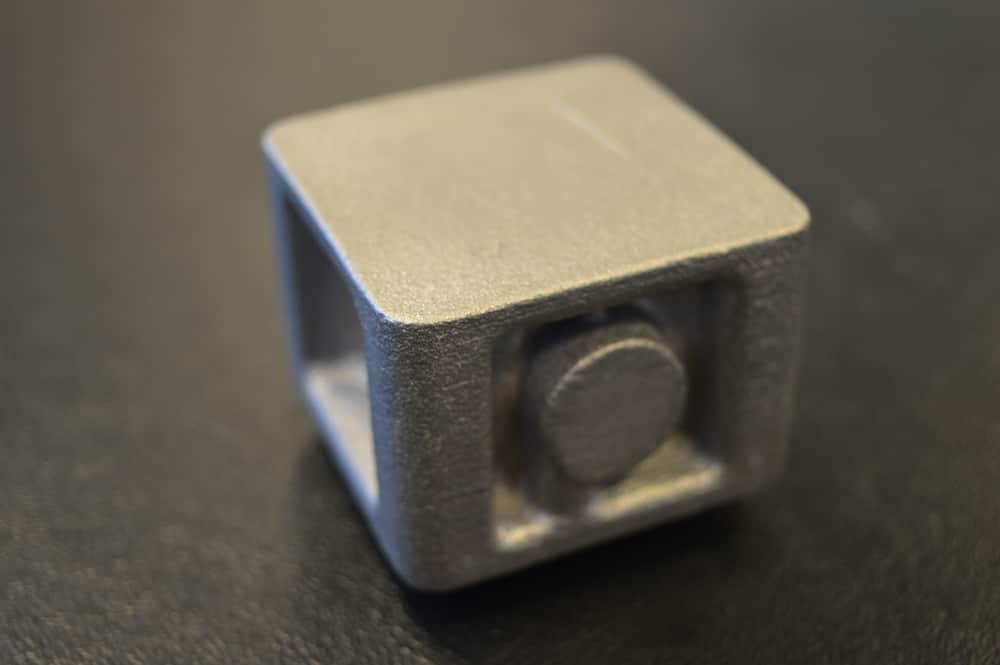Everything You Need to Know about Lost Wax Casting
Lost wax casting, also known as investment casting, or precision casting, has been a well-known and popular metal casting process for a very long time. It has remained the process of choice for many, then, especially due to its accuracy, ability to replicate details, repeatability and integrity.
Dean Group has been providing this service since 1972 and is a member of the Cast Metals Federation. We are also accredited by the BSI with the ISO 9001:2008 accreditation and have extensive knowledge and experience to cast a large range of ferrous, non-ferrous and exotic metals.
History of Lost Wax Casting
Lost wax casting has existed for thousands of years, with the earliest known examples of this process thought to date back to 3700 BC after tests with carbon-14 dating. They were found in the Cave of the Treasure hoard in southern Israel. Other early examples of the investment casting process exist in many different countries and regions as well.
In the historic region of Mesopotamia, lost wax casting was heavily used for small and large-scale casting; in South Asia, Pakistan, a 6,000-year old copper amulet crafted with this process has been found. Egypt, Greece East Asia, Africa, Europe… objects cast through this technique have been discovered around the world.
Lost wax casting is used to produce detailed, intricate metal components that are then applied to a variety of industries and situations. This technique might have originated thousands of years ago, then, but it still plays a very important role in the casting of today.
How Does Lost Wax Casting Work?
Lost wax casting is a pretty standardised process. This means that, while each foundry will have its own techniques for casting a specific metal, this method is typically the same for everyone. It consists of several different stages, starting with the creation of a wax model and ending with the finished metal piece.
The phases of this technical process usually comprise of:
- Cutting an aluminium tool from the 3D CAD information
- Creating an original positive model for a component in wax from the tooling
- The wax is assembled on a runner system (‘tree’)
- A ceramic shell is built around the assembly via a dipping and drying process (investment)
- The shell is dewaxed with high-pressure steam and fired in an oven to provide mechanical strength
- Molten metal is poured into the pre-heated shell
- The ceramic is broken off once the metal cools
- The parts are cut from the ‘tree’
- Ingate (feed positions) are ground off
- If required, setting, finishing and machining are done
- Inspection and specified NDT requirements
Where and When is the Lost Wax Casting Process Used?
There are many different applications for lost wax casting in many different industries. For a very long time, this technique has been used to cast jewellery and small parts, as well as sculptures. However, investment casting now forms part of most industry’s supply chains and includes the medical industry (knee and hip implants), the automotive, rail and mining industries, the aerospace industry And virtually every other manufacturing method that needs precise metal components.
Which Metals are Used in Lost Wax Casting?
The investment casting process is versatile, meaning a wide range of materials can be used to produce high-quality parts, whether they’re light or strong, common or rare. At Dean Group, for example, some of the materials we use in our casting process includes:
Stainless Steels and Heat Resistant Lost Wax Castings
Stainless steel offers a versatile option for castings, and is used across many industries. The material is built from a mix of chromium, nickel and molybdenum. The grain and properties of the alloy created when using stainless steel will be determined by the levels of each of these metals. As chromium always accounts for 10% of the metal used, these alloys will be resistant to corrosion and oxidation.
Carbon steel Lost Wax Castings
Often chosen due to its low cost, economical and ferromagnetic properties, carbon steel is available in several grades and can be versatile in its ductility with heat treatment. Carbon steel alloys are often used within the aerospace, agriculture, medical and firearm industries.
Nickel and cobalt alloys
Like stainless steel, nickel and cobalt alloys are resistant to oxidation, however both also offer a strong resistance to heat, wear and corrosion. Due to this you often find these alloys suit industries where extreme heat and corrosion is possible, such as marine, military, chemical and aerospace. These materials can be combined alongside iron and aluminium to create Alnico, a superalloy which offers a permanent magnet used within electric motors, magnetron tubes, turbine blades and jet aircraft engines.
Copper-based alloys
Copper based alloys offer exceptional thermal and electrical conductivity, low wear and tear rates and good ductility. They are often found within the marine, plumbing and electrical industries. Alloys featuring copper include bronze which is found in bearings and boat propellers, brass found in musical instruments, plumbing and explosives, and cooper-nickel which is commonly combined to make castings in the marine industry.
Aluminium Lost Wax Castings
Aluminium lost wax castings are popular due to the metal’s machinability and corrosion resistance. Thanks to its fluid nature aluminium alloys can feature thin walls and when combined with other metals or when heat treated, the metal develops exceptional strength. The metal is one of the most abundant of all as it makes up 8% of the Earth's crust. It is a lightweight metal often used in the aerospace, military, automotive, packaging, food preparation and electrical industries. As well as aluminium lost wax casting, Dean Group also offers aluminium die casting services.
What are The Benefits of Lost Wax Casting?
Lost wax casting is best suited for smaller, complex parts, as it offers an excellent degree of precision and design flexibility– you can add numbers, product ID, logos, and so much more to a cast created with this method. Investment casting is also a method that doesn’t typically require a lot of secondary processing, such as polishing, as the surface finish is far superior to most other forms of casting. It also results in finished components with tighter tolerances than other processes, like sand casting, meaning that post-machining and its associated costs can be greatly reduced or removed completely.
This process offers many other advantages, both in terms of design and regarding costs. Unlike other processes, draft angles are not required and parts can be weight optimised with the reduction in machining. Our premium grade investment casting is capable of offering, amongst other features, up to 30kgs of casting capacity (and up to 150kgs of China casting capacity), short UK lead times, small to large volume runs, Baseefa and Atex compliant parts. At DGI we offer 3D design support with digital casting simulations, heat treatment, and a wide range of finish options.
Lost wax casting is a highly technical process, which requires extensive knowledge and skill at each stage of the process so that the resulting components have high integrity and quality. A high degree of process control is also essential in order to maintain quality standards. We pride ourselves on our vast experience in investment casting in the UK, so don’t hesitate to enquire about our services and a team member will discuss your project needs with you.
Registered in England VAT No: 146307478 Company Registration No: 1062820







